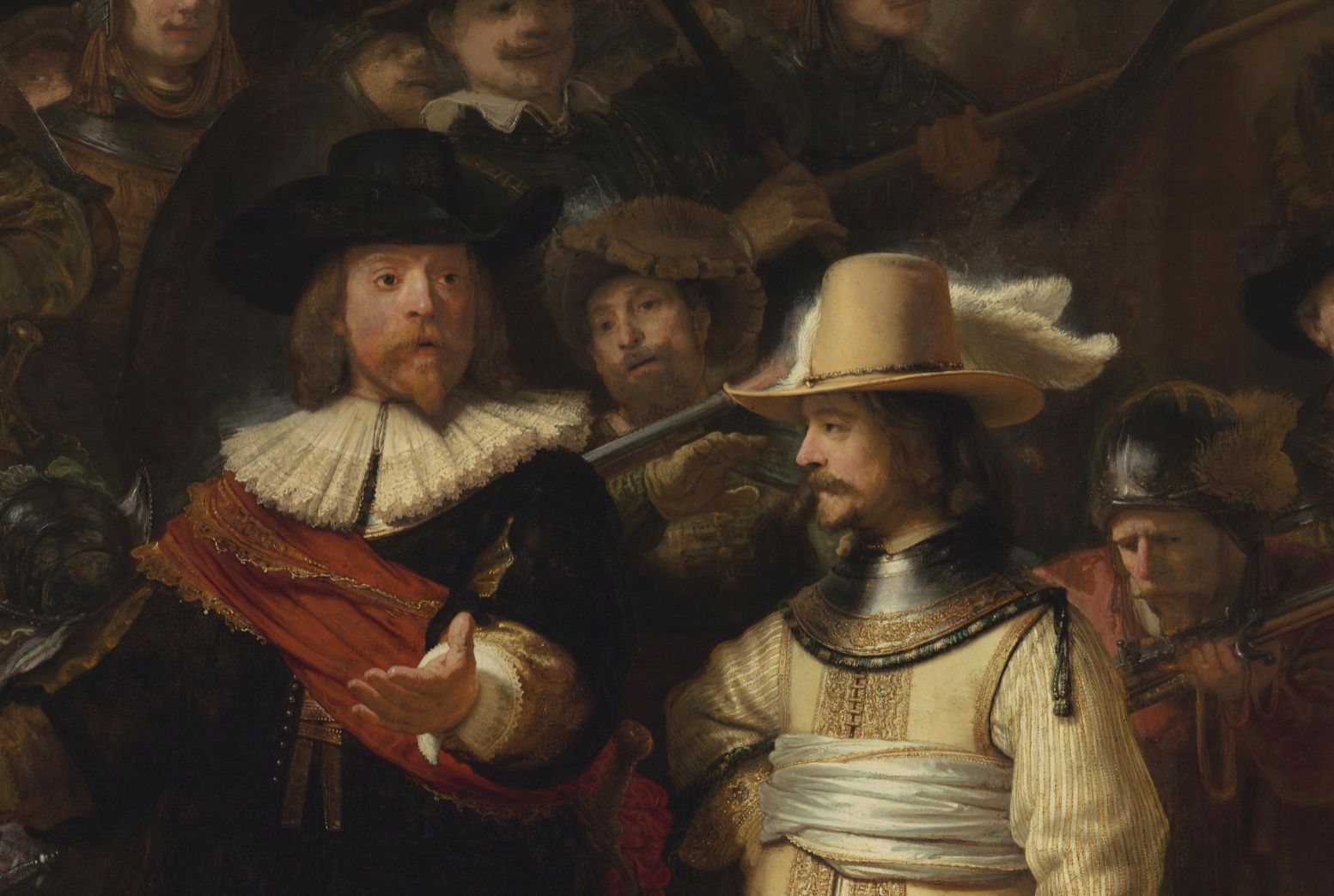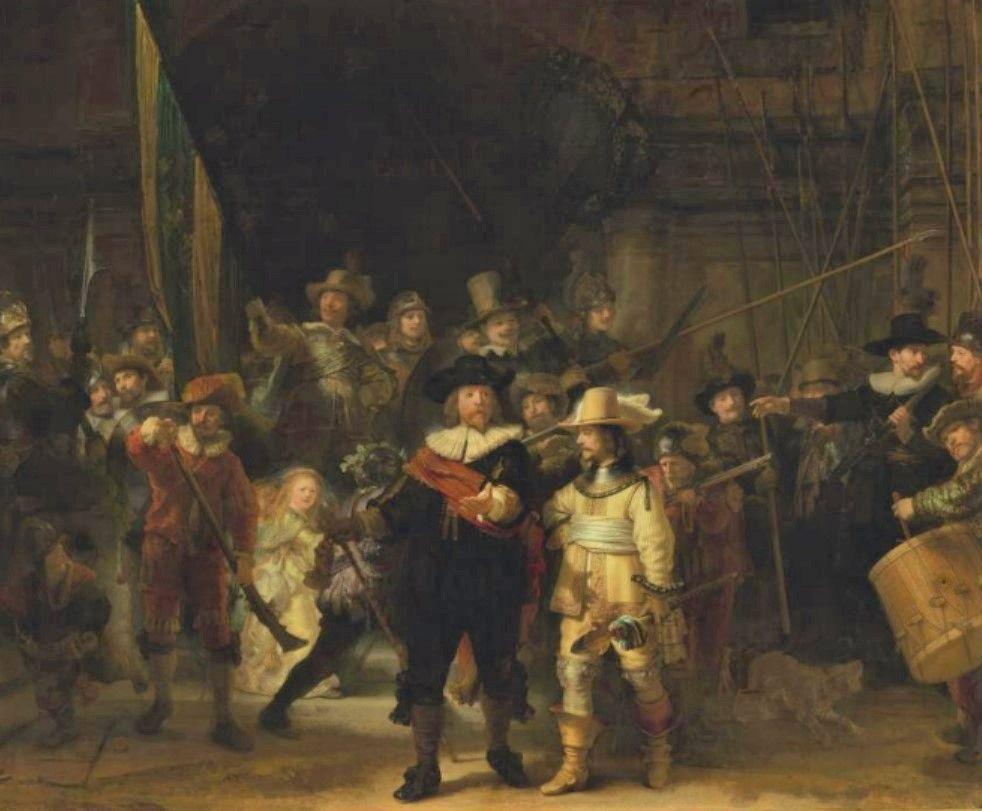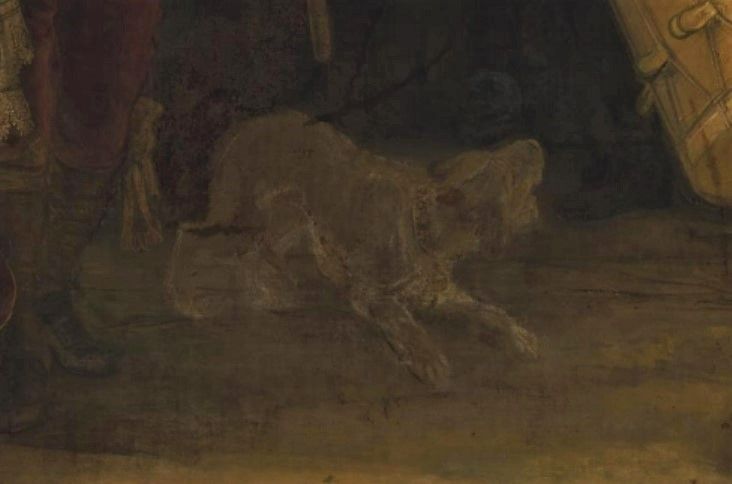Advances in imaging have meant new ways of studying the solar system, improving athletic performance, and interacting with the arts. Ultra-high-resolution photos (any image exceeding 400 megapixels) have emerged as a way to allow deeper examination of priceless works without damaging the original artifact. And now, the largest, most comprehensive photograph of a work of art has arrived from Operation Night Watch.
Closeups of the painting have revealed unlocked fascinating information about the Dutch master’s technique. AI mapping revealed that Rembrant originally sketched details on the canvas, such as helmet decorations, that aren’t visible in the final painting. And the new technology shed light on a chalk sketch of a dog that uses a technique not seen in other Rembrant works.
The project, which aims to research and preserve the 1642 Rembrant painting "The Night Watch," has stitched together several smaller photographs to create a 717 gigapixel image. If you’re counting individual pixels, that’s 717,000,000,000 of them, all spaced 5 micrometers apart. To put that tininess in perspective, one pixel measures less than a red blood cell.
A 100-megapixel Hasselblad camera captured the smaller images, and AI stepped in to smooth over the seams as it stitched them together. Clear out some space in your hard drive if you’d like to download this sucker, though—the file size is 5.6 terabytes.



